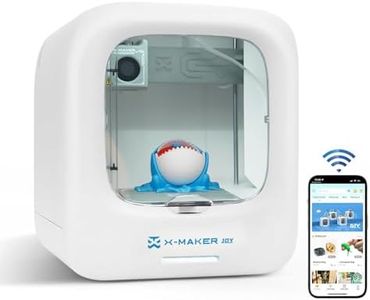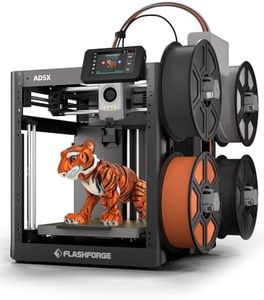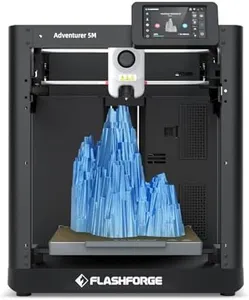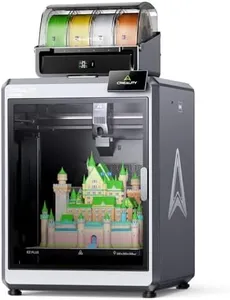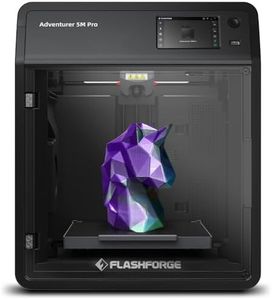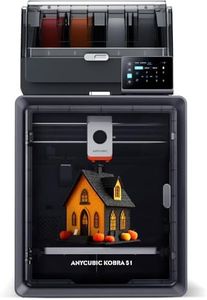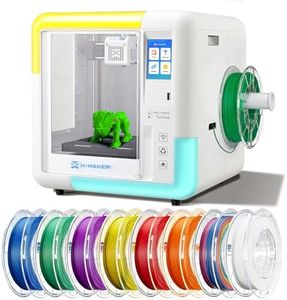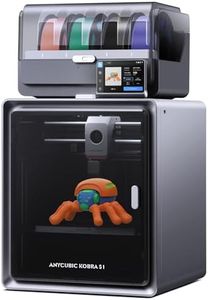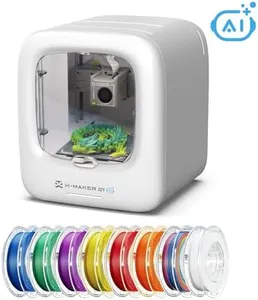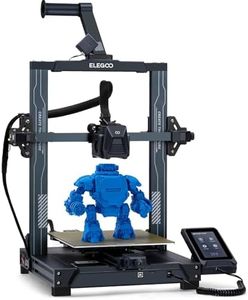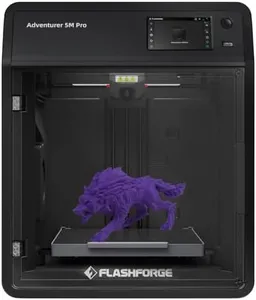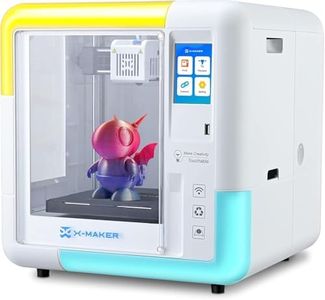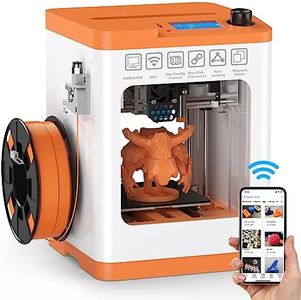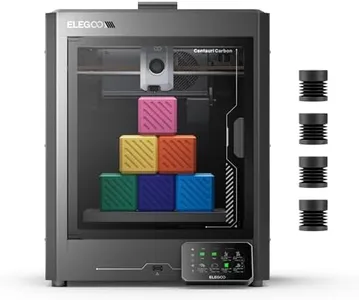10 Best Home 3 D Printers 2025 in the United States
Our technology thoroughly searches through the online shopping world, reviewing hundreds of sites. We then process and analyze this information, updating in real-time to bring you the latest top-rated products. This way, you always get the best and most current options available.

Our Top Picks
Winner
FLASHFORGE AD5X Multi-Color 3D Printer, CoreXY 600mm/s High-Speed, 1-Click Auto Leveling, 300°C Direct Drive Extruder, 220x220x220mm Build Volume, Ideal for Precision and Efficiency
Most important from
291 reviews
The FLASHFORGE AD5X is a solid choice for home users interested in multi-color 3D printing with a decent build volume of 220x220x220mm, which suits most standard projects. One of its standout features is the ability to print with up to 4 colors simultaneously, adding impressive creative flexibility. The 1-Click Auto Leveling makes bed calibration simple, which is great for beginners or those who want hassle-free setup. Its print speed is notably high, reaching up to 600mm/s thanks to the Core XY design, making it one of the faster options in its class. This speed doesn’t seem to compromise quality thanks to a direct-drive extruder that can heat up to 300°C, supporting a wide range of filaments including some flexible and specialty types.
The printer comes with multiple nozzle sizes, allowing choices between finer detail and faster prints. Connectivity options include remote monitoring and control via a mobile app, adding convenience for home use. However, the 220mm build volume might be limiting if you plan to print larger objects. Also, while the printer offers advanced features like vibration compensation and power-loss resume, the relatively large weight and metal frame mean it’s less portable or compact compared to some other home models.
Flashforge printers typically support popular slicing software, which should be user-friendly. The AD5X balances speed, multi-color capability, and quality well, making it suitable for hobbyists and enthusiasts who want efficient and versatile printing at home.
Most important from
291 reviews
FLASHFORGE 3D Printer AD5M, CoreXY 600mm/s High-Speed Printer with 1-Click Auto Leveling, High-Temp Direct Drive Extruder, 3s Quick-Swap Nozzle, 220×220×220mm Build Volume
Most important from
291 reviews
The FLASHFORGE AD5M is a strong contender for home 3D printing enthusiasts who want speed and versatility. Its CoreXY design allows for very fast printing speeds up to 600mm/s, which is excellent if you want to quickly create prototypes or multiple parts. The 220×220×220mm print volume is decent for most home projects but might feel small if you plan to print larger items. One of its standout features is the 1-click auto bed leveling, which simplifies setup by automatically adjusting the print bed to ensure the first layer sticks well—a big help for beginners or anyone who wants a smoother printing experience.
The high-temperature direct drive extruder supports a range of filaments, including more advanced materials, and the quick-swap nozzles let you balance between detail and speed easily. Connectivity through the Flash Maker app lets you monitor prints remotely, adding convenience and control. Additionally, the printer’s open-source nature means you can customize or upgrade firmware and hardware if you become more experienced.
The printer is packed with features, though its metal frame and overall build might feel a bit bulky or complex for those completely new to 3D printing. Also, the 220mm build cube limits very large prints. The AD5M is suitable for hobbyists, educators, and small-scale makers who value fast printing, easy leveling, and material flexibility, but those needing very large prints or ultra-simple machines might want to consider other options.
Most important from
291 reviews
ELEGOO Neptune 4 Pro 3D Printer, 500mm/s High Speed Printer with Klipper Firmware, Auto Leveling and Direct Drive Extruder, Easy Assembly, 8.85x8.85x10.43 Inch Printing Size
Most important from
1990 reviews
The ELEGOO Neptune 4 Pro is a fast and precise home 3D printer that stands out mainly due to its high print speed, capable of reaching up to 500mm/s thanks to its Klipper firmware and powerful processor. Its print volume is quite generous at 8.85 x 8.85 x 10.43 inches, offering enough space for most personal projects or prototypes. The printer uses upgraded metal guide rails on both the X and Y axes, which improves print accuracy and reduces wobbling issues common in entry-level models. Filament compatibility is broad, supporting popular materials like PLA, PETG, ABS, TPU, and nylon, making it versatile for various hobbyist needs. The direct drive extruder combined with a 300°C high-temperature nozzle helps in handling flexible and tougher filaments more smoothly without clogging. Another handy feature is the 121-point auto bed leveling system, which simplifies setup and improves print reliability by ensuring the print surface is perfectly flat. The printer also includes segmented heated zones, which can reduce energy consumption and speed up warm-up times compared to traditional heated beds. Cooling is well managed with dual fans to prevent warping and maintain print quality. Connectivity options include compatibility with laptops, PCs, and smartphones, making it flexible to use with different devices. The printer is made from aluminum for sturdy build quality and offers relatively easy assembly.
While the impressive speed is a highlight, beginners might find that such speeds require fine-tuning to avoid print quality issues. Also, being a relatively recent model, some users might need to invest time learning the Klipper firmware for optimal use. The ELEGOO Neptune 4 Pro represents a strong choice for home users seeking a fast, reliable, and versatile printer capable of handling a variety of materials and larger print sizes with good precision, though it may take some effort to master its advanced features.
